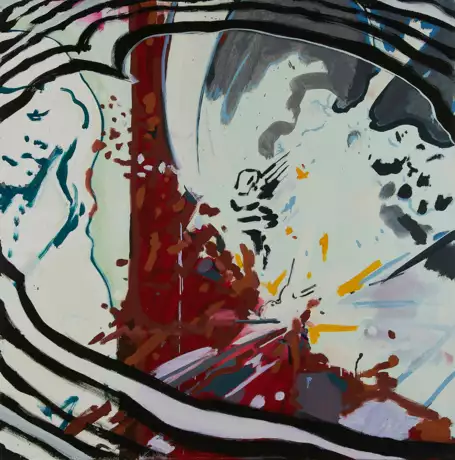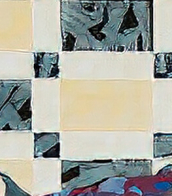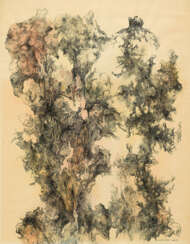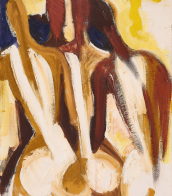max schultze

Max Schulze is a German artist. Max Schulze studied free art/painting at the Düsseldorf Art Academy from 1999 to 2005. In 2004 he became a master student of Jörg Immendorff. Schulze is co-editor of the art magazine schwarzweiss-eins/-zwei/-drei/-vier in Düsseldorf. In his work he deals with the artistic extension of painterly practice. Max Schulze is one of the two sons of the painter Memphis Schulze. He lives and works in Dusseldorf.


Max Schulze is a German artist. Max Schulze studied free art/painting at the Düsseldorf Art Academy from 1999 to 2005. In 2004 he became a master student of Jörg Immendorff. Schulze is co-editor of the art magazine schwarzweiss-eins/-zwei/-drei/-vier in Düsseldorf. In his work he deals with the artistic extension of painterly practice. Max Schulze is one of the two sons of the painter Memphis Schulze. He lives and works in Dusseldorf.


Max Schulze is a German artist. Max Schulze studied free art/painting at the Düsseldorf Art Academy from 1999 to 2005. In 2004 he became a master student of Jörg Immendorff. Schulze is co-editor of the art magazine schwarzweiss-eins/-zwei/-drei/-vier in Düsseldorf. In his work he deals with the artistic extension of painterly practice. Max Schulze is one of the two sons of the painter Memphis Schulze. He lives and works in Dusseldorf.


Bernard Schultze was a German painter who co-founded the Quadriga group of artists along with Karl Otto Götz and two other artists.


Bernard Schultze was a German painter who co-founded the Quadriga group of artists along with Karl Otto Götz and two other artists.



Jean Philippe Arthur Dubuffet, a pioneering French painter and sculptor, revolutionized the post-war art scene with his radical Matterism movement. He defied the conventional aesthetics of his time, championing "low art" and propelling a more genuine, humanistic image-making approach.
Dubuffet, born in Le Havre, France, in 1901, was a prominent figure at the Ecole de Paris and an advocate for Art Brut, or "raw art", which sought to capture art's purest form. His works were characterized by a rough, unrefined aesthetic, which eschewed academic norms in favor of spontaneity and authenticity.
Art enthusiasts and experts can view Dubuffet's innovative works at institutions like the Museum of Modern Art, where his legacy as a groundbreaking artist continues to be celebrated. His Matterism philosophy has left an indelible mark on the art world, inspiring generations of artists to embrace the beauty in the unconventional.
For those interested in the avant-garde and the legacy of Jean Philippe Arthur Dubuffet, sign up for our exclusive updates. This service is designed for connoisseurs and professionals in the art and antique sector, promising alerts on new insights and events strictly related to Dubuffet's profound influence.


Roy Fox Lichtenstein, an American icon of the Pop Art movement, is celebrated for his comic strip-inspired art. Born in 1923 in New York City, Lichtenstein's journey into the art world was marked by various phases, evolving from Cubism and Abstract Expressionism to the distinctive Pop Art style he is renowned for.
Roy Lichtenstein's artistic career gained momentum in the 1960s, a period during which he embraced the comic strip as his primary source of inspiration. His pioneering use of Ben-Day dots, a technique borrowed from commercial printing, became his signature style, bringing a new visual language to fine art. His approach transformed mundane subjects from popular culture into compelling fine art, challenging traditional notions of artistry.
Among his most notable works, "Drowning Girl" (1963), displayed at the Museum of Modern Art in New York, exemplifies his iconic style with its bold lines, vivid colors, and Ben-Day dots. This piece, along with others like "Look Mickey" and "Whaam!", played a critical role in establishing Pop Art as a major art movement, contrasting starkly with the Abstract Expressionism prevalent at the time.
Roy Lichtenstein's art was not just limited to canvas; he explored multiple media, showcasing his versatility. His shift to Pop Art marked a significant turn in his career, bringing him fame and controversy alike. His works, often based on comic strips and advertisements, were both a parody and homage to the mass-produced, consumerist culture of his time.
For art collectors and experts, Lichtenstein's works offer a fascinating glimpse into a transformative era in art history. His approach to Pop Art remains influential, and his works are celebrated worldwide for their innovative and provocative style.
Interested in staying updated on sales and auction events featuring Roy Lichtenstein's works? Sign up for our updates. We provide straightforward, no-nonsense information on the latest in art sales and auctions related to Lichtenstein.


Jean Philippe Arthur Dubuffet, a pioneering French painter and sculptor, revolutionized the post-war art scene with his radical Matterism movement. He defied the conventional aesthetics of his time, championing "low art" and propelling a more genuine, humanistic image-making approach.
Dubuffet, born in Le Havre, France, in 1901, was a prominent figure at the Ecole de Paris and an advocate for Art Brut, or "raw art", which sought to capture art's purest form. His works were characterized by a rough, unrefined aesthetic, which eschewed academic norms in favor of spontaneity and authenticity.
Art enthusiasts and experts can view Dubuffet's innovative works at institutions like the Museum of Modern Art, where his legacy as a groundbreaking artist continues to be celebrated. His Matterism philosophy has left an indelible mark on the art world, inspiring generations of artists to embrace the beauty in the unconventional.
For those interested in the avant-garde and the legacy of Jean Philippe Arthur Dubuffet, sign up for our exclusive updates. This service is designed for connoisseurs and professionals in the art and antique sector, promising alerts on new insights and events strictly related to Dubuffet's profound influence.


Helmut Sturm was a German painter.
From 1952 to 1958, he studied at the Akademie der Bildenden Künste, Munich. After this he joined Heimrad Prem, Lothar Fischer and Hans-Peter Zimmer in founding Gruppe SPUR, which in 1959 entered the Situationist International.
From 1980 to 1982, he was guest professor at the Hochschule der Künste, Berlin, taking over Hann Trier's class. He continued to exhibit across Germany and from 1985 to 1998 was professor at the Akademie der Bildenden Künste, Munich.













































































